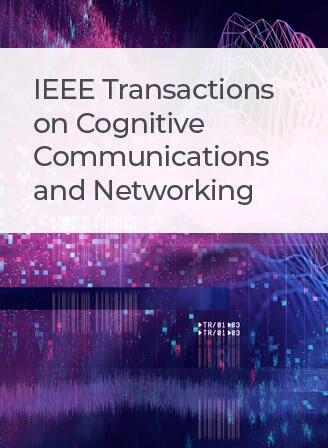通过渗流理论实现智能反射面辅助网络的连通性
IF 7
1区 计算机科学
Q1 TELECOMMUNICATIONS
IEEE Transactions on Cognitive Communications and Networking
Pub Date : 2023-08-25
DOI:10.1109/TCCN.2023.3308782
引用次数: 0
摘要
集成接入和回程(IAB)技术可取代有线传输基础设施,从而实现经济高效的超密集网络部署。然而,高能耗、脆弱的无线链路和覆盖漏洞阻碍了 IAB 的发展。智能反射面(IRS)能以低成本增强覆盖范围并智能配置无线电环境,因此能很好地解决 IAB 面临的挑战。本文的重点是在大规模 IAB 网络中形成基站(BS)与 IRS 之间的异构通信,实现基于渗滤的 BS 连接,以确保进一步经济高效地部署 BS,并在用户之间成功传输数据包。两个节点进程之间的依赖性和通信链路的不对称性为 IRS 辅助 IAB 网络的连接性带来了新的挑战。为了应对这些挑战,我们应用连续介质渗流理论仔细研究了 IRS 辅助无线网络的拓扑和分析特性。具体来说,分析证明了无限连接组件的唯一性,并证明了相应连通区域内的拓扑连通性。此外,论文还确定了实现网络连通性的必要条件和充分条件,这些条件体现在 BS 节点和 IRS 节点的临界密度上。本文通过模拟验证了理论分析,确认了推导边界与蒙特卡罗结果之间的一致性。本文章由计算机程序翻译,如有差异,请以英文原文为准。
Connectivity of Intelligent Reflecting Surface Assisted Network via Percolation Theory
The integrated access and backhaul (IAB) technology enables cost-effective ultradense network deployment, by replacing wired transmission infrastructure. However, IAB is hindered by high energy consumption, fragile wireless links, and coverage holes. With the capability of enhancing coverage and smart configuration of the radio environment at a low cost, intelligent reflecting surfaces (IRSs) can well address the challenges in IAB. This paper focuses on forming heterogeneous communication between base station (BS) and IRS in large-scale IAB networks, achieving percolation-based connectivity of BSs to ensure further cost-effective BSs deployment and successful data packet delivery between users. The dependency between the two node processes and the asymmetry of communication links introduce new challenges for connectivity in IRS-assisted IAB networks. To address these challenges, continuum percolation theory is applied to scrutinize the topological and analytical properties of the IRS-assisted wireless network. Specifically, the analysis demonstrates the uniqueness of the infinite connected component and proves the topological connectivity within the corresponding connectivity region. Additionally, the paper establishes the necessary and sufficient conditions for achieving network connectivity manifested in the critical densities of both BS and IRS nodes. The theoretical analysis is validated through simulations, confirming alignment between derived bounds and Monte Carlo results.
求助全文
通过发布文献求助,成功后即可免费获取论文全文。
去求助
来源期刊

IEEE Transactions on Cognitive Communications and Networking
Computer Science-Artificial Intelligence
CiteScore
15.50
自引率
7.00%
发文量
108
期刊介绍:
The IEEE Transactions on Cognitive Communications and Networking (TCCN) aims to publish high-quality manuscripts that push the boundaries of cognitive communications and networking research. Cognitive, in this context, refers to the application of perception, learning, reasoning, memory, and adaptive approaches in communication system design. The transactions welcome submissions that explore various aspects of cognitive communications and networks, focusing on innovative and holistic approaches to complex system design. Key topics covered include architecture, protocols, cross-layer design, and cognition cycle design for cognitive networks. Additionally, research on machine learning, artificial intelligence, end-to-end and distributed intelligence, software-defined networking, cognitive radios, spectrum sharing, and security and privacy issues in cognitive networks are of interest. The publication also encourages papers addressing novel services and applications enabled by these cognitive concepts.
 求助内容:
求助内容: 应助结果提醒方式:
应助结果提醒方式:


